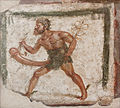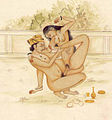Portal:Erotica and pornography
Introduction
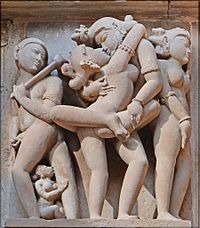
Erotica is art, literature or photography that deals substantively with subject matter that is erotic, sexually stimulating or sexually arousing. Some critics regard pornography as a type of erotica, but many consider it to be different. Erotic art may use any artistic form to depict erotic content, including painting, sculpture, drama, film or music. Erotic literature and erotic photography have become genres in their own right. Erotica also exists in a number of subgenres including gay, lesbian, women's, monster, tentacle erotica and bondage erotica.
The term erotica is derived from the feminine form of the ancient Greek adjective: ἐρωτικός (erōtikós), from ἔρως (érōs)—words used to indicate lust, and sexual love. (Full article...)
Pornography (colloquially called porn or porno) is sexually suggestive material, such as a picture, video, text, or audio, intended for sexual arousal. Made for consumption by adults, pornographic depictions have evolved from cave paintings, some forty millennia ago, to modern-day virtual reality presentations. A general distinction of adults-only sexual content is made, classifying it as pornography or erotica.
The oldest artifacts considered pornographic were discovered in Germany in 2008 and are dated to be at least 35,000 years old. Human enchantment with sexual imagery representations has been a constant throughout history. However, the reception of such imagery varied according to the historical, cultural, and national contexts. The Indian Sanskrit text Kama Sutra (3rd century CE) contained prose, poetry, and illustrations regarding sexual behavior, and the book was celebrated; while the British English text Fanny Hill (1748), considered "the first original English prose pornography," has been one of the most prosecuted and banned books. In the late 19th century, a film by Thomas Edison that depicted a kiss was denounced as obscene in the United States, whereas Eugène Pirou's 1896 film Bedtime for the Bride was received very favorably in France. Starting from the mid-twentieth century on, societal attitudes towards sexuality became lenient in the Western world where legal definitions of obscenity were made limited. In 1969, Blue Movie by Andy Warhol became the first film to depict unsimulated sex that received a wide theatrical release in the United States. This was followed by the "Golden Age of Porn" (1969–1984). The introduction of home video and the World Wide Web in the late 20th century led to global growth in the pornography business. Beginning in the 21st century, greater access to the Internet and affordable smartphones made pornography more mainstream. (Full article...)
Selected article
John Calvin Culver (November 2, 1943 – August 10, 1987), better known under his stage name Casey Donovan, was an American male pornographic film actor from the late 1960s until the mid-1980s, appearing primarily in adult films and videos catering to gay male audiences, during the Golden Age of Porn. Following a brief career as a Latin teacher and a stint as a highly-paid male model, Donovan appeared in Boys in the Sand (1971), the film that would cement his status as a gay icon. Attempts to build on his notoriety to achieve mainstream crossover success failed, but Donovan continued to be a bankable star in the adult industry for the next 15 years. He was briefly a mainstream actor, who appeared on stage, as well as a theatre producer and manager, and appeared as himself in TV series The Emerald City. (Full article...)
Selected work of erotic literature
Lady Chatterley's Lover is the final novel by English author D. H. Lawrence, which was first published privately in 1928, in Florence, Italy, and in 1929, in Paris, France. An unexpurgated edition was not published openly in the United Kingdom until 1960, when it was the subject of a watershed obscenity trial against the publisher Penguin Books, which won the case and quickly sold three million copies. The book was also banned for obscenity in the United States, Canada, Australia, India and Japan. The book soon became notorious for its story of the physical (and emotional) relationship between a working-class man and an upper-class woman, its explicit descriptions of sex and its use of then-unprintable profane words. It entered the public domain in the United States in 2024. (Full article...)
Slideshow of selected contemporary images
Slideshow of selected historical images
Did you know (auto-generated) -

- ... that the Japanese male–male romance magazine June was originally pitched to its publisher as a "mildly pornographic magazine for women"?
- ... that the pastor John Littlejohn went from selling pornographic literature to sailors as a youth to protecting the Declaration of Independence?
- ... that the nature documentary The Green Planet, narrated by David Attenborough, has been compared to both horror films and a "plant porno"?
- ... that Money Shot: The Pornhub Story was described by multiple reviewers as unsalacious?
- ... that Claudia Riner was falsely accused of distributing lesbian erotica in the Kentucky House of Representatives?
- ... that later pressings of the soundtrack of the soft porn film The Stud replaced Manfred Mann's Earth Band's "Davy's on the Road Again" after a journalist blabbed its presence to the band's keyboardist?
- ... that John Wayne Bobbitt Uncut was the bestselling pornographic film of 1994 and had the most rentals that year in the United States?
- ... that before being restored as a Broadway theater, the Ritz Theatre was used as a television studio, pornographic theater, vaudeville house, children's theater, and poster warehouse?
Topics
Categories
Related portals
Associated WikiProjects
 |
 |
| Sexology and sexuality | Pornography |
Associated Wikimedia
The following Wikimedia Foundation sister projects provide more on this subject:
-
Commons
Free media repository -
Wikibooks
Free textbooks and manuals -
Wikidata
Free knowledge base -
Wikinews
Free-content news -
Wikiquote
Collection of quotations -
Wikisource
Free-content library -
Wikiversity
Free learning tools -
Wiktionary
Dictionary and thesaurus

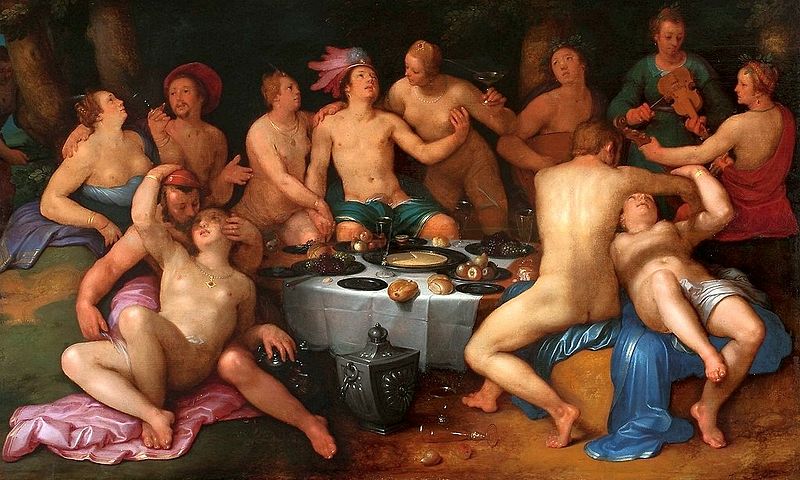


















































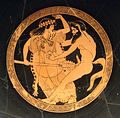











![Image 14Indian Princess, by Richard Borrmeister [de] (1888?)](http://up.wiki.x.io/wikipedia/commons/thumb/0/01/Richard_Borrmeister_Indische_Prinzessin_1888.jpg/102px-Richard_Borrmeister_Indische_Prinzessin_1888.jpg)




